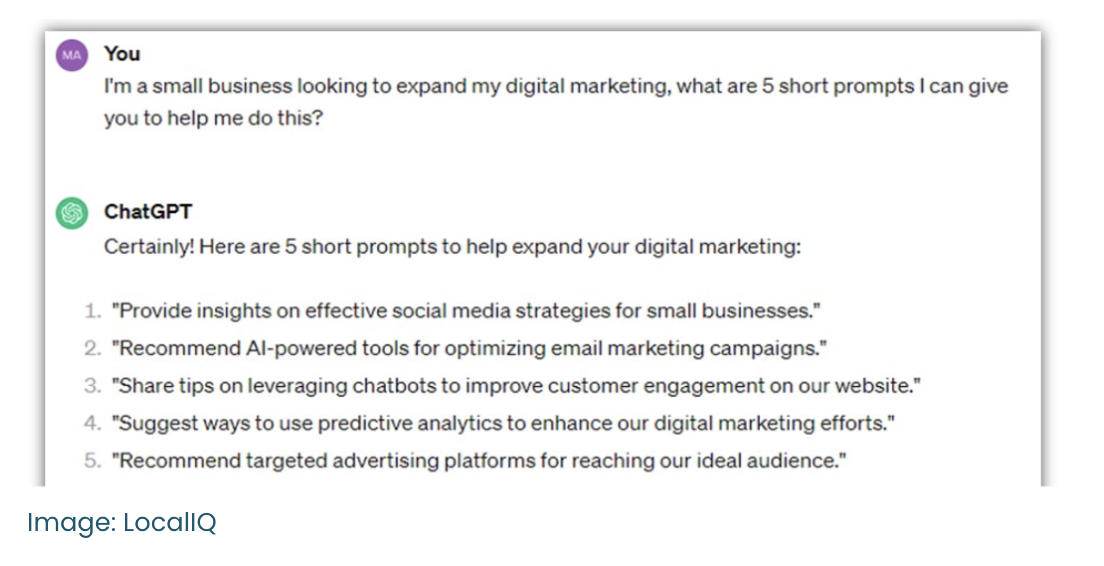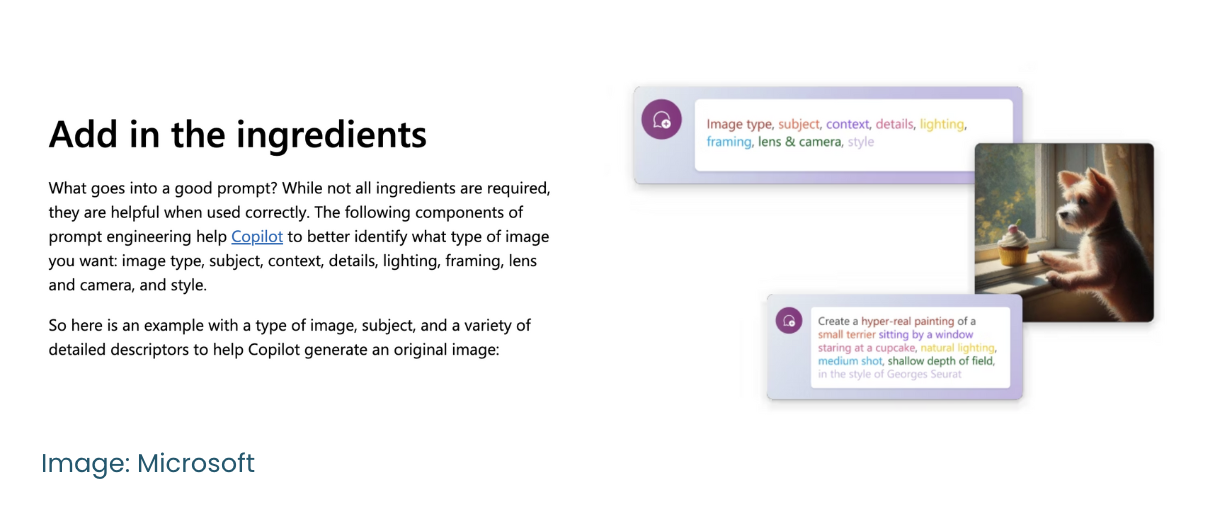Generative AI Prompting Tips That Will Make You Feel Like an AI Expert

Contents

Generative AI is rapidly becoming a pivotal tool across various domains such as research, learning, and creativity. Central to utilizing modern generative AI effectively is mastering the art of prompt engineering—crafting specific inquiries to effectively communicate with and guide AI systems for optimal, relevant responses. Some popular Generative AI tools that people use every day include Copilot, ChatGPT, and Jasper.
However, the effectiveness of these interactions hinges on understanding the inherent limitations of AI. Unlike humans, AI systems do not possess the intuition or insight to inherently grasp users' needs and nuances without clear context and instructions. Crafting effective prompts demands specific language that avoids the casual slang, metaphors, and nuanced social cues often embedded in human dialogue.
To maximize the potential of generative AI and to increase the likelihood of quality outputs, users must become adept at formulating and refining prompts. The following tips and strategies will guide users on how to craft more effective prompts, making you feel like an AI expert!

1.Understand the desired goals
Understanding the desired outcome is fundamental to successful prompt engineering. The effectiveness of any query hinges on not only knowing the right questions to ask but also how to ask them effectively. However, this starts with the user having a clear vision of their goals.
Before interacting with a generative AI tool, it is crucial for users to define the objectives of the inquiry and the expected outcomes. This brainstorm can include many important aspects like the content length, layout, tone, or any specific data points the audience should receive. It is then essential that the user delineates any actions that the system must execute in the prompt.
When interacting with AI, it's crucial to remember that these systems lack human intuition and personal familiarity—they are not capable of reading minds or recalling shared experiences. AI operates strictly within the confines of the data and directives provided to it through prompts.
Therefore, crafting clear, explicit, and actionable requests is essential. Begin by defining your desired outcome and then carefully outline the specific task that needs to be performed or the precise question that requires an answer.
For instance, consider the query "Analyze company performance" This prompt is too vague because the prompt does not include the desired time frame, performance metrics, data sources, or the desired format. A more effective prompt would provide specific details to guide the analysis, such as "Provide a quarterly financial performance analysis of the company for 2023, focusing on revenue growth, cost management, and profit margins, presented in a comparative dashboard format." This version eliminates ambiguity and sets clear expectations for the output.
Generative AI is engineered to generate creative and expansive content, playing to its strengths as a creator. When restricted to simple yes-or-no questions, however, it tends to produce outputs that are brief and lack depth, which may not fully harness its capabilities.
In contrast, formulating open-ended questions allows for greater creativity and detail in the responses. For instance, asking, "Is Copilot a good tool?" typically results in a straightforward and concise reply. On the other hand, a more open-ended prompt like "Describe the benefits, features, and most popular use cases for Copilot" encourages a more thorough exploration of the topic. Such prompts invite the AI to delve into a multifaceted analysis, resulting in richer and more informative content that leverages the full potential of the AI's generative abilities.

4.Suggest a response length
Although generative AI is designed to foster creativity, it's often beneficial to set guidelines concerning factors like output length. For instance, you might specify whether you want a response that is simplified and concise or one that is expansive and detailed.
It's important to remember, however, that generative AI tools typically cannot adhere to exact word or character counts. This limitation stems from the nature of natural language processing models like GPT-3, which are trained to generate text based on linguistic patterns rather than to count words or characters. An example prompt could read: “Write a simplified and concise paragraph on the latest supply chain trends in the fashion industry. The paragraph should be about 5 sentences long.”
5.Tell AI to assume a persona identity
Asking generative AI to assume a specific identity within a prompt can significantly enhance the relevance and authenticity of its responses. This technique is particularly useful when the content needs to reflect a certain perspective or expertise. For example, prompting AI to respond as a nutrition expert, a CEO, or a chief marketing officer will impact the style, and depth of information to suit the intended audience. It also helps in creating more engaging and contextually appropriate interactions. By assigning an identity to the AI, users can guide its responses to align more closely with the expectations and nuances of that role, resulting in outputs that are not only more precise but also more relatable and compelling to the audience.
Prompting for images
Image prompting can be challenging because it requires translating abstract ideas into visual language that AI can understand and execute effectively. Unlike text-based prompts, images must encapsulate details like composition, color, mood, and context in a way that aligns with the desired outcome. To get it right, it's essential to be as specific as possible: clearly define the subject matter, specify artistic styles or inspirations, and detail the emotions or atmosphere you want the image to convey. Incorporating references or examples can also guide the AI more accurately. Best practices include using detailed descriptive language, being mindful of the AI's capabilities and limitations, and iteratively refining prompts based on initial outputs. By carefully crafting your prompt to include these elements, you can significantly improve the relevance and quality of the AI generated images.

Prompt engineering is a crucial skill for anyone looking to harness the full potential of generative AI in their personal or professional life. By understanding how to craft precise and effective prompts, you can guide AI systems to produce more accurate and relevant outputs, whether in text or images. The art of prompt engineering not only enhances the efficiency of interactions with AI but also ensures that the results are aligned with specific goals and expectations.
As AI technologies continue to evolve and integrate into various aspects of work and creativity, mastering prompt engineering will become increasingly important. It's a powerful tool that, when used wisely, can unlock the vast capabilities of AI and bring about innovative solutions and breakthroughs in multiple fields.
Do you have questions about AI and how it can help your company reach its full potential? Louder Co.’s team of experts is here to help! Contact Louder Co. today to get the conversations started.


